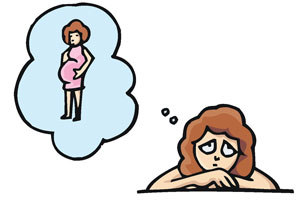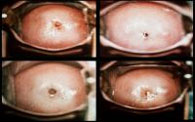Infertility (Part One)

Infertility is defined as the failure to conceive (regardless of cause) after 1 year of unprotected sex.
Infertility affects approximately 10-15% of couples in reproductive age. Rapid development in this medical field has led to the identification of more and more causes of this disease.
In societies where priority is given to the development of a professional career, some women delay having children until their 30s or later. As a result, these women may have more difficulty conceiving and a higher risk of miscarriages.
In women older than 35 years, it is advisable to have a full assessment after 4-6 months of trying to conceive because their response to treatment may be suboptimal due to decreased ovarian reserve.
Major advances in the treatment of infertility have made it possible for many couples to have children with medical assistance, regardless of the origin of the problem which could be from either male or female factor. Advances in culture preservation techniques have resulted in improved pregnancy rates using assisted reproduction technologies (ART).
The Etiology of Infertility
Reproduction requires the interaction and integrity of the male and female reproductive tracts which include (1) the release of normal preovulatory oocytes, (2) sufficient sperm production, (3) normal gamete transport to the ampullary part of the Fallopian tube (where fertilization occurs), and (4) subsequent transport of the divided embryos into the endometrial cavity for implantation and development.
Infertility is caused by male and/or female factors. Male and female factors each account for about 35% of cases. Often, more than one factor exists, with a combination of male and female factors causing 20% of infertility. In the remaining 10% of cases, the etiology is unknown, and these are categorized as unexplained infertility or normal infertile couples (NIC).
Other lifestyle factors associated with a high risk of infertility include environmental and occupational factors; toxic effects related to smoking, marijuana, or other drugs; excessive physical exercise; inappropriate diet that leads to extreme weight gain or loss; and advanced age.
Female Factors of Infertility
Female factors of infertility can be divided into several categories: cervical or uterine, ovarian, tubal, and others.
Cervical Factor of Infertility
The cervical factor of infertility can be caused by stenosis or abnormalities of the mucus-sperm interaction. The uterine cervix plays a major role in the transport and capacitation of sperm after intercourse. The cervical factor accounts for about 5-10% of infertility. The production and characteristics of cervical mucus vary depending on the concentration of estrogen in the blood during the late follicular phase.
At the beginning of the menstrual cycle, cervical mucus is scant, viscous, and highly cellular. The mucus forms a net-like structure that does not allow sperm passage. The secretion of mucus increases during the middle follicular phase and reaches its peak approximately 24-48 hours before ovulation.
The concentration of water and salts increases, changing the physical characteristics of the mucus. The mucus becomes thin, watery, basic, non-cellular, and elastic due to the increase in NaCl concentration.
 |
 |
 |
| Infertility. Changes in os cervicalis during the menstrual cycle. Images by Jairo E. Garcia, MD. | Infertility. Clean cervical mucus preovulatory. Images by Jairo E. Garcia, MD. | Infertility. Preovulatory mucus pattern like iron. Images by Jairo E. Garcia, MD. |
At this moment, the mucus self-organizes, forming micro-channels so that the sperm can pass through. During this journey, the sperm undergo activation and capacitation. Also, the mucus acts as a filter for abnormal sperm and cellular debris present in semen.
The secretion of mucus can be altered by hormonal and medical changes, especially medications such as clomiphene citrate, which reduces production. Hypoestrogenism can cause thickening of cervical mucus, which impairs sperm passage.
Cervical stenosis can cause infertility by blocking the passage of sperm from the cervix into the intrauterine cavity. Cervical stenosis can be of congenital etiology or acquired, resulting from surgical interventions, infections, hypoestrogenism, and radiation therapy.
Hello. Doctor, I am 40 years old and I have a problem with my menstrual cycle. My first cycle was announced at the age of 12, it lasted 7 days then I had a 6-month pause after this 6-month break until the age of 15 I had a regular cycle, but after this age, I had irregularities, sometimes happening every three months and sometimes I didn't have a cycle for even 8 months. During the time of the cycle, the blood was not red but sometimes it was the color of brown in the form of soil. In 2005 I was on vacation at the seaside, on the first day I was on my period and I didn't go into the water for 5 days, after 5 days I went into the water and the bleeding stopped, and since that time the cycle comes every 30 to 35 days. After this, I started having facial hair, for which I used Diana 35 but it increased my transaminases and I stopped it, then I started using Yasmin but I stopped it because it caused me to gain a lot of weight. It is worth mentioning that I had testosterone of 94 while the normal value was 0.09 to 0.55 and I reached the value of 0.88. Besides these, I also have cysts, DG.diff: follicle
Sent by Lindita Teneqja, më 17 January 2018 në 07:32
Hello Mrs. Teneqeja,
If your wish is to have a child then you need to come and talk closely as there are things that need clarification.
All the best!
Replay from Dr. Marsel Haxhia, më 17 January 2018 në 08:34